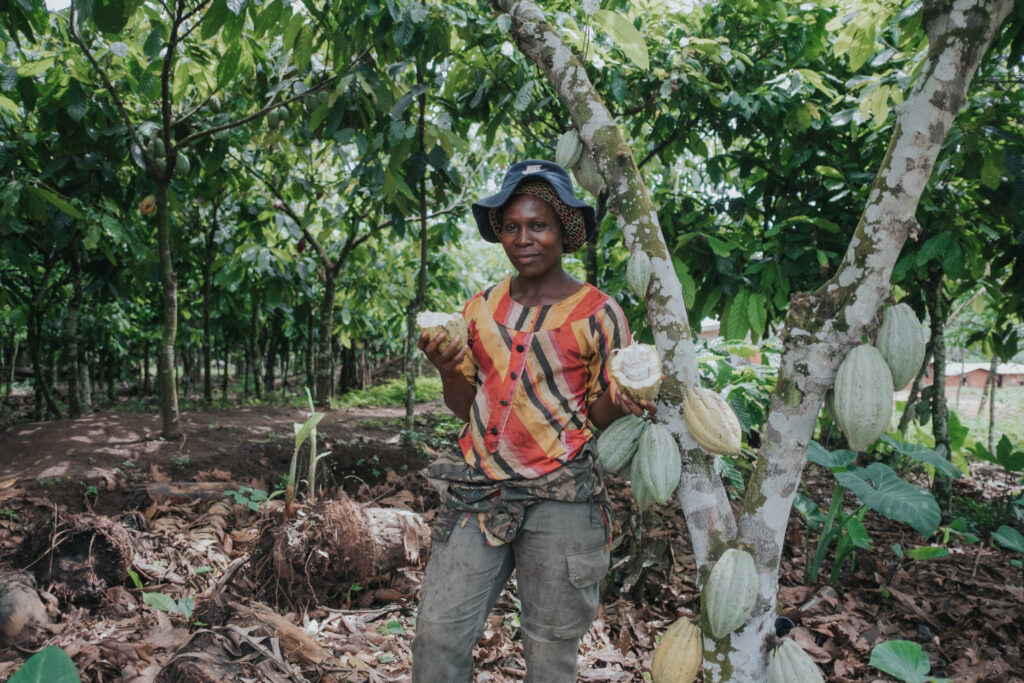Forests are not the first thing that comes to mind when you think about food security. Sure, it’s fun to go mushroom picking, but otherwise what is the big deal about the role of forests in food security? Why is this year’s High Level Panel of Experts Report (HLPE), the science-policy interface of the UN Committee on World Food Security (CFS), dealing with this topic?
In search of the answer, SIANI spoke with Camilla Widmark, senior researcher at the Swedish University of Agricultural Sciences (SLU), who is a member of the project team authoring the HLPE Report about sustainable forestry for food and nutrition security (FSN).
Working on the report, Camilla Widmark was surprised that the level of awareness about the links between forests and food is quite low: “We do not know, for example, how many people in Sweden and Norway depend on meat from hunting. Many Swedes take for granted the fact that forests are a wonderful source of wild berries and mushrooms. But will we be able to pick these in the future? We hardly ever put forest and food in the same sentence, but maybe we need to change that now?”
Acknowledging connections is the first step to understanding the role of forests in food security; that was the starting point for the HLPE team. There are direct links, like hunting and picking of wild fruits, nuts, mushrooms and berries – all highly nutritious foods full of vitamins and minerals important for human health which forests can provide in times when harvests fail. Intercropping food trees with forest species, one of the agroforestry techniques, has also proven to be an effective food security and resilience strategy. There are also indirect links, like firewood for cooking, pollination, soil erosion prevention, water filtering and other ecosystem services. And there are social and cultural dimensions of forestry, like livelihoods, gender, equity, land tenure and governance – all crucial to food security too.
Widely discussed among scientists, these connections are not properly acknowledged in policy, where forests and food are usually treated separately, which has already shown to be counter-productive. According to Widmark, it is the very area that remains the most challenging to work with: “We need to identify and develop governance mechanisms that can integrate and utilize the complexity of the various values of forests. It will be very tricky because of the growing demand and competition for land among different actors with different interests, like farmers, companies working with timber and biofuels, forest communities, the food industry, various ecosystem services and growing cities.”
The HLPE report summarizes ongoing trends, but is foremost a call for an integrated approach at the landscape level based on multifunctionality. Having in mind the four pillars of food security – availability, access, utilization and stability – the HLPE team identified steps that can help policy makers to integrate forestry and agriculture while optimizing the use of natural resources, addressing effects of climate change and balancing competing interests. As is often the case with global policy, the recommendations are broad and general and it is up to the country members to interpret them and apply in their locations.
Terence Sunderland, a Principal Scientist with CIFOR’s Forests and Livelihoods programme, who is the lead of the HLPE project team explains that all the seven major recommendations will not be relevant to all countries or conditions: “The report presents recommendations, but not solutions. The seven clusters of recommendations that we put forward in the report are not all relevant to all countries and regions. The purpose of the recommendations is that each country can pick up those that are relevant to the specific conditions.”
So, what does the HLPE team recommend to do to integrate forestry and agriculture for better food security? Here are the seven principles to keep in mind:
- Develop and use policy-relevant knowledge on the direct and indirect contributions of forests and trees to FSN.
- Enhance the role of forests in environmental processes at all scales without compromising the right to adequate food of forest-dependent people.
- Support the contributions of forests to improve livelihoods and economies for FSN.
- Promote multifunctional landscapes for FSN that integrate forests and trees as key components.
- Acknowledge the importance and strengthen the role of forests and trees in enhancing resilience at landscape, community and household levels for FSN.
- Recognize and respect land and natural resource tenure and use rights over forests and trees for FSN.
- Strengthen inclusive forest governance systems across sectors and scales for FSN.
Although it is not explicitly mentioned in the recommendations, Widmark emphasizes that any policy that concerns food and forests should always adopt a people-centered approach. She then concludes: “I hope that the report will be an eye-opener. It shows that forests are a part of something bigger, that sustainable forestry is paramount to achieving food and nutrition security for all.”
This post is part of the SIANI-GFAR spotlight on forests and food. Click here to check out more posts on the topic!
SIANI and Focali will co-host a side event during the 44th session of the Committee on World’s Food Security in Rome.
